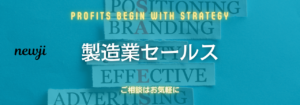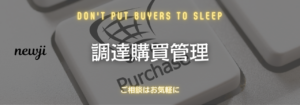- お役立ち記事
- Revolutionizing Japanese Manufacturing: The Impact of Silicon-on-Insulator (SOI) on Efficiency and Innovation

Revolutionizing Japanese Manufacturing: The Impact of Silicon-on-Insulator (SOI) on Efficiency and Innovation

目次
Introduction to Silicon-on-Insulator (SOI) Technology
Silicon-on-Insulator (SOI) technology has emerged as a pivotal advancement in the semiconductor industry, significantly influencing manufacturing processes and outcomes. By integrating a layer of insulator material between the silicon substrate and the active device layer, SOI enhances performance, reduces power consumption, and mitigates various manufacturing challenges. In the context of Japanese manufacturing, renowned for its precision and technological prowess, SOI is revolutionizing efficiency and fostering innovation across multiple sectors.
Advantages of SOI in Japanese Manufacturing
Enhanced Performance and Efficiency
SOI technology offers superior electrical performance compared to traditional bulk silicon. The insulating layer minimizes parasitic capacitance, leading to faster switching speeds and reduced power consumption. For Japanese manufacturers, this translates to more efficient production lines and higher-quality electronic components.
Improved Thermal Management
Efficient heat dissipation is crucial in maintaining the integrity and longevity of electronic devices. SOI’s layered structure enhances thermal conductivity, allowing for better heat management. This is particularly beneficial in high-density manufacturing environments prevalent in Japan, where managing thermal loads is essential for consistent performance.
Reduced Manufacturing Defects
The insulating layer in SOI technology reduces the likelihood of defects during the manufacturing process. Japanese manufacturers, known for their stringent quality control, benefit from the lower defect rates, leading to higher yields and reduced waste.
Scalability and Flexibility
SOI technology provides greater flexibility in scaling down device sizes without compromising performance. This scalability aligns with Japan’s focus on miniaturization and innovation, enabling the development of compact and high-performing electronic devices.
Disadvantages and Challenges of SOI Implementation
Higher Initial Costs
Implementing SOI technology involves higher initial investment compared to traditional silicon-based processes. The specialized materials and manufacturing equipment required can be cost-prohibitive for some manufacturers, posing a financial challenge despite the long-term benefits.
Limited Supplier Availability
The specialized nature of SOI technology means that there are fewer suppliers capable of meeting high-quality standards. Japanese manufacturers may face challenges in sourcing reliable suppliers, potentially impacting production timelines and costs.
Complex Manufacturing Processes
SOI introduces additional complexity into the manufacturing process. The integration of the insulator layer requires precise control and advanced fabrication techniques, which may necessitate additional training and expertise for manufacturing personnel.
Supplier Negotiation Techniques for SOI Components
Establishing Clear Quality Standards
Japanese manufacturers must prioritize clear communication of quality standards when negotiating with SOI suppliers. Detailed specifications and stringent quality requirements ensure that suppliers can meet the high-performance expectations inherent in Japanese manufacturing.
Building Long-Term Relationships
Fostering strong, long-term partnerships with suppliers is crucial for sustainability and reliability. Japanese business culture values trust and mutual respect, which can lead to more favorable terms and collaborative problem-solving in the supply chain.
Leveraging Market Knowledge
Understanding the global SOI market dynamics allows manufacturers to negotiate better terms. Staying informed about supply shortages, technological advancements, and price fluctuations can provide leverage in discussions with suppliers.
Implementing Performance-Based Contracts
Performance-based contracts incentivize suppliers to maintain high standards by tying compensation to specific performance metrics. This approach aligns supplier objectives with manufacturer goals, ensuring consistent quality and reliability.
Market Conditions Affecting SOI Adoption in Japan
Technological Advancements
Rapid advancements in semiconductor technology drive the adoption of SOI in Japan. As SOI continues to evolve, its integration into various manufacturing processes becomes more seamless, encouraging broader acceptance and implementation.
Global Competition
Japan faces intense competition from other leading manufacturing nations. Adopting SOI technology provides a competitive edge by enhancing product performance and reducing production costs, essential for maintaining market leadership.
Economic Factors
Economic stability and investment in research and development are critical for SOI adoption. Japan’s strong economic position supports the necessary investments in SOI technology, fostering innovation and efficiency in manufacturing.
Regulatory Environment
Government policies and regulations play a significant role in technology adoption. Supportive policies that encourage research and development in semiconductor technologies like SOI can accelerate its integration into manufacturing processes.
Best Practices for Integrating SOI in Procurement and Purchasing
Comprehensive Supplier Evaluation
Conducting thorough evaluations of potential SOI suppliers ensures alignment with quality standards and reliability. Assessing suppliers’ technological capabilities, financial stability, and production capacity is essential for sustainable procurement.
Collaborative Development Initiatives
Engaging in collaborative development with suppliers can lead to innovations in SOI applications. Joint research and development efforts facilitate knowledge sharing and the co-creation of tailored solutions that meet specific manufacturing needs.
Risk Management Strategies
Implementing robust risk management strategies mitigates potential disruptions in the supply chain. Diversifying suppliers, maintaining safety stock, and conducting regular risk assessments help ensure continuity in SOI component availability.
Continuous Improvement and Feedback Loops
Establishing continuous improvement processes and feedback loops with suppliers fosters ongoing enhancements in SOI technology integration. Regular performance reviews and open communication channels promote a culture of excellence and adaptability.
The Future of SOI in Japanese Manufacturing
As technology continues to advance, the role of SOI in Japanese manufacturing is set to become even more significant. Innovations in semiconductor design, the rise of IoT devices, and the increasing demand for energy-efficient electronics will drive further adoption of SOI technology. Japanese manufacturers, with their commitment to precision and quality, are well-positioned to leverage SOI for enhanced efficiency and groundbreaking innovations.
Investment in research and development, coupled with strategic supplier partnerships, will be crucial in maximizing the benefits of SOI technology. By embracing continuous improvement and staying abreast of technological trends, Japanese manufacturers can ensure they remain at the forefront of the global manufacturing landscape.
Conclusion
Silicon-on-Insulator technology stands as a transformative force in Japanese manufacturing, offering substantial improvements in efficiency and fostering a culture of innovation. While the integration of SOI presents certain challenges, the advantages it brings in terms of performance, thermal management, and scalability are undeniable. By adopting best practices in procurement and purchasing, effectively negotiating with suppliers, and navigating market conditions, Japanese manufacturers can fully harness the potential of SOI technology. As the industry evolves, SOI will undoubtedly play a critical role in maintaining Japan’s leadership in high-tech manufacturing.
 資料ダウンロード
資料ダウンロード
QCD管理受発注クラウド「newji」は、受発注部門で必要なQCD管理全てを備えた、現場特化型兼クラウド型の今世紀最高の受発注管理システムとなります。
 NEWJI DX
NEWJI DX
製造業に特化したデジタルトランスフォーメーション(DX)の実現を目指す請負開発型のコンサルティングサービスです。AI、iPaaS、および先端の技術を駆使して、製造プロセスの効率化、業務効率化、チームワーク強化、コスト削減、品質向上を実現します。このサービスは、製造業の課題を深く理解し、それに対する最適なデジタルソリューションを提供することで、企業が持続的な成長とイノベーションを達成できるようサポートします。
 製造業ニュース解説
製造業ニュース解説
製造業、主に購買・調達部門にお勤めの方々に向けた情報を配信しております。
新任の方やベテランの方、管理職を対象とした幅広いコンテンツをご用意しております。
 お問い合わせ
お問い合わせ
コストダウンが利益に直結する術だと理解していても、なかなか前に進めることができない状況。そんな時は、newjiのコストダウン自動化機能で大きく利益貢献しよう!
(β版非公開)






